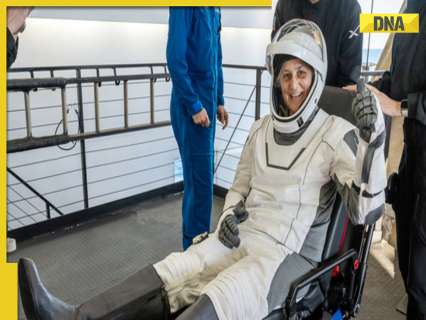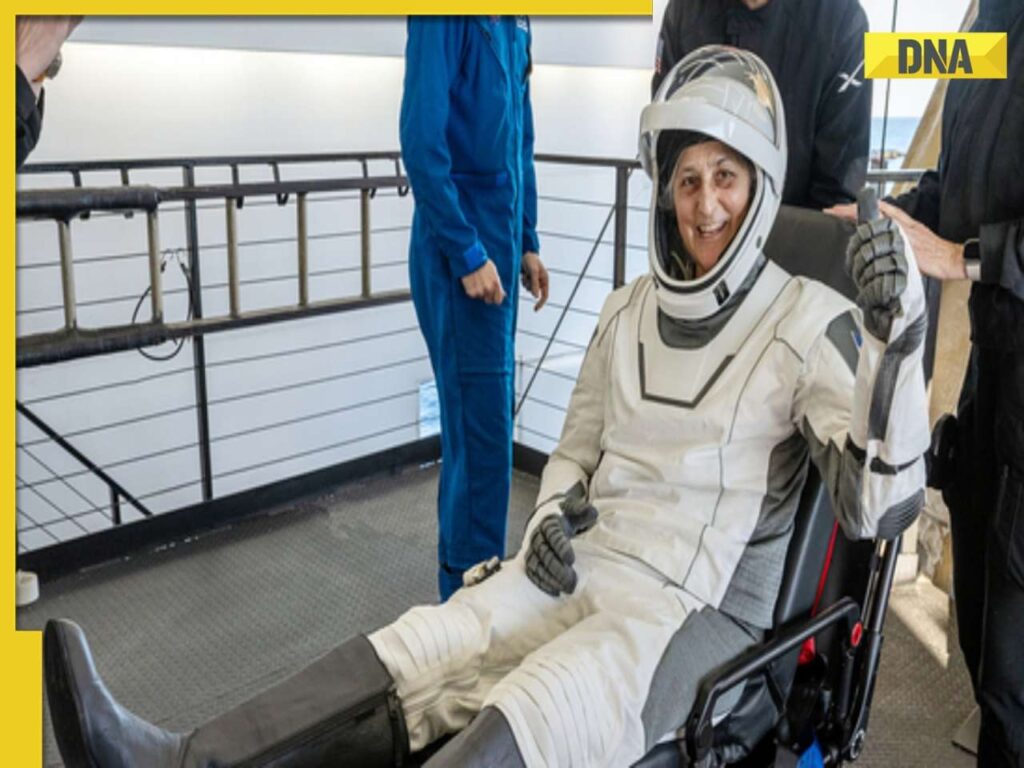
As NASA’s primary facility for astronaut training and recovery, the center is well-equipped to address the challenges astronauts face after long missions.
Indian-American astronaut Sunita Williams has made a triumphant return to Earth after an extended nine-month mission aboard the International Space Station (ISS). As a vital member of NASA’s SpaceX Crew-9 mission, Williams, along with her fellow crew members, completed a smooth splashdown in the Gulf of Mexico on March 19, 2025. This successful landing marked the end of yet another remarkable mission in Williams’ illustrious career and showcased a significant milestone in the ongoing journey of human space exploration.
The mission, which lasted nine months, was far from ordinary. Williams and her crew played a crucial role in carrying out groundbreaking scientific experiments, performing intricate maintenance tasks, and significantly contributing to the operational efficiency of the ISS. The mission duration, extended due to unexpected technical challenges, underscored the immense resilience and adaptability required of astronauts who undertake long-duration space missions.
After splashdown, SpaceX recovery teams acted promptly, dispatching specialized vessels equipped with cranes and medical facilities to secure and retrieve the Crew Dragon capsule. Divers worked meticulously to stabilize the spacecraft before it was carefully lifted onto the recovery ship. Once the capsule was securely on deck, the hatch was opened, and Williams, along with her teammates, was helped out. Despite the relatively smooth landing, the physical toll of prolonged microgravity was apparent. Astronauts often face issues such as dizziness, muscle weakness, and disorientation when readjusting to Earth’s gravity. Medical personnel were immediately on hand to conduct initial health checks and provide support. Although Williams appeared slightly unsteady, she maintained a positive and composed demeanor, reflecting her vast experience and mental toughness.
Following her extraction from the spacecraft, Williams was promptly taken to the Johnson Space Center in Houston, Texas, to begin her rehabilitation. As NASA’s primary facility for astronaut training and recovery, the center is well-equipped to address the challenges astronauts face after long missions. The rehabilitation process, lasting 45 days, is designed to gradually help her regain physical strength, flexibility, and cardiovascular function. It includes exercises to rebuild muscle mass, increase bone density, and restore balance since extended periods in space can weaken muscles, reduce bone density, and affect cardiovascular health. Medical experts closely monitor her progress, regularly conducting assessments to ensure a safe and effective recovery.
Rehabilitation after spaceflight is not just about regaining physical strength; it is a well-planned process aimed at restoring the body’s complex balance after months in microgravity. Williams is closely monitored for cardiovascular performance, muscle strength, bone density, and neurological responses. The program is specifically tailored to address the unique changes astronauts experience while in space.
The initial phase of rehabilitation focuses on basic movements and flexibility exercises to restore balance and coordination. As her recovery progresses, the program incorporates more rigorous strength training and endurance exercises to rebuild muscle mass and cardiovascular fitness. Medical evaluations are conducted regularly to track improvements and make necessary adjustments to the regimen.
Despite the demanding rehabilitation process, Williams displayed remarkable composure and determination from the moment of splashdown. Her strong spirit and unwavering commitment to regaining her fitness reflect her deep dedication to her profession. This positive mindset not only aids her recovery but also serves as an inspiration to aspiring astronauts and space enthusiasts worldwide.
Throughout her mission, Williams made invaluable contributions to scientific research on the ISS. She conducted experiments spanning various fields, including human physiology, materials science, and astrophysics, with a focus on understanding how long-term exposure to microgravity affects the human body. These studies are vital for planning future long-duration missions to the Moon and Mars. Williams also played a critical role in testing innovative technologies and equipment designed to enhance the operational capabilities of the ISS and support the future of space exploration.
Beyond scientific experiments, Williams was instrumental in maintaining the operational integrity of the ISS. She took part in essential maintenance tasks, including spacewalks to repair and upgrade key systems, demonstrating her technical expertise and meticulous attention to detail. This hands-on approach ensured the station’s safety and sustained functionality throughout the mission.
Williams’ remarkable achievements have earned her immense respect both within the scientific community and among the public. Her dedication to space exploration and her commitment to pushing the boundaries of human capability have made her a role model for aspiring astronauts. As she continues on her rehabilitation journey, NASA and SpaceX are committed to sharing updates on her progress. These updates not only educate the public about the challenges of human spaceflight but also celebrate the triumphs of long-duration missions.
Sunita Williams’ successful return and ongoing recovery mark another chapter in humanity’s quest to explore the cosmos. Her dedication to science, commitment to the ISS, and unbreakable spirit stand as a symbol of human perseverance. As she completes her rehabilitation and looks ahead to new challenges, her legacy will continue to inspire future generations to dream big and reach for the stars.
(The author Girish Linganna of this article is an award-winning Science Writer and a Defence, Aerospace & Political Analyst based in Bengaluru. He is also Director of ADD Engineering Components, India, Pvt. Ltd, a subsidiary of ADD Engineering GmbH, Germany. You can reach him at: [email protected]*)
(Disclaimer: The views expressed above are the author’s own and do not reflect those of DNA)

